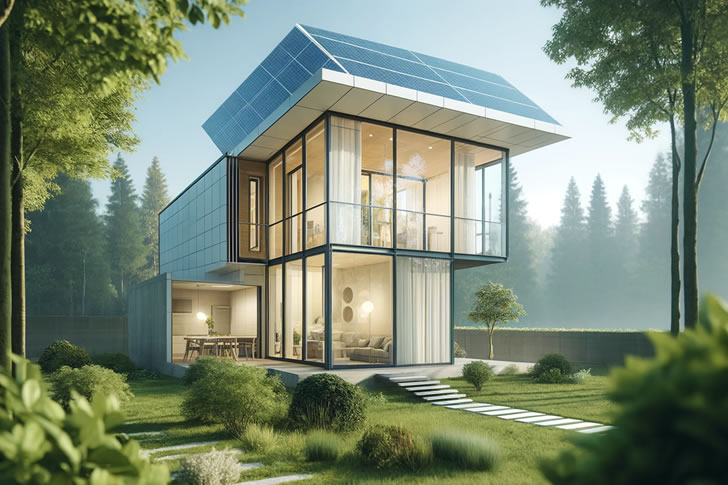How to Obtain Cost-Effective Eco-Friendly Housing for Seniors
Recently, many seniors are turning to eco-friendly homes for a sustainable retirement. Despite higher costs, this article discusses practical ways for seniors to economically secure these properties.

Understanding Eco-Friendly Housing
Eco-friendly homes incorporate several key design features and technologies aimed at reducing energy consumption and utilizing sustainable resources. These typically include solar panels, energy-efficient appliances, sustainable building materials, and designs that maximize natural light and air circulation. While the initial investment in these features can be significant, they often lead to substantial savings in energy costs over time.
Planning and Budgeting
The first step in securing an eco-friendly home is thorough planning and budgeting. Seniors should assess their financial situation and determine how much they can realistically invest in a new home. It’s crucial to factor in not only the purchase price but also potential renovations, maintenance, and the running costs of energy-efficient systems. Financial planning should also take into account any existing pensions, savings, and regular income, as well as potential financial assistance from family members if applicable.
Location Considerations
The location of a property plays a crucial role in its suitability as an eco-friendly home. Some regions offer tax incentives or rebates for homeowners who choose to install solar panels or other renewable energy systems. Additionally, the climate of an area can significantly affect the efficiency of eco-friendly installations; for instance, solar panels perform best in areas that receive ample sunlight.
Housing Programs and Incentives
Several government and non-profit organizations offer programs and incentives that can help reduce the cost of eco-friendly housing for seniors. These might include grants for energy-efficient renovations or special mortgage programs for eco-friendly homes. Researching local, state, and federal programs can provide valuable financial support and information.
Building vs. Buying
When it comes to eco-friendly housing, one significant decision is whether to build a new home or buy and modify an existing one. Building a new home allows for more customization of eco-friendly features but often comes with a higher cost and longer timeframe. Buying an existing home and making necessary modifications might be a more cost-effective option, especially if the home already has some eco-friendly features.
Energy Efficiency Assessments
Before making a purchase, it’s advisable to conduct an energy efficiency assessment of the potential home. This assessment can help identify current efficiencies and pinpoint areas for improvement. It also provides a clearer picture of upfront costs versus long-term savings, helping seniors make a more informed decision.
Sustainable Building Materials
Choosing the right building materials can have a significant impact on the sustainability and cost-effectiveness of an eco-friendly home. Materials such as reclaimed wood, recycled insulation, and low-VOC (volatile organic compounds) paints help reduce the environmental impact of the home and can also contribute to healthier indoor air quality, which is particularly important for seniors.
Community and Support
Joining a community of like-minded individuals can provide emotional and practical support. Some communities are specifically designed with eco-friendly living in mind, offering shared resources and amenities that can reduce overall living costs. These communities often have shared gardens, tool lending libraries, and community energy systems, which can further reduce expenses.
Maintenance and Upkeep
Understanding the maintenance and upkeep required for eco-friendly technologies and materials is crucial. While some eco-friendly features might require less maintenance than traditional systems, others might need regular professional check-ups to ensure they operate efficiently. Planning for these expenses is an important part of budgeting for an eco-friendly home.
Conclusion
Securing an eco-friendly home on a budget requires careful planning, research, and consideration of numerous factors. By understanding the specific needs associated with sustainable living, leveraging available programs and incentives, and making informed decisions about location, building materials, and energy use, seniors can successfully navigate the complexities of eco-friendly homeownership. This approach not only benefits the environment but also promotes a sustainable, cost-effective lifestyle in retirement.







Recent Comments